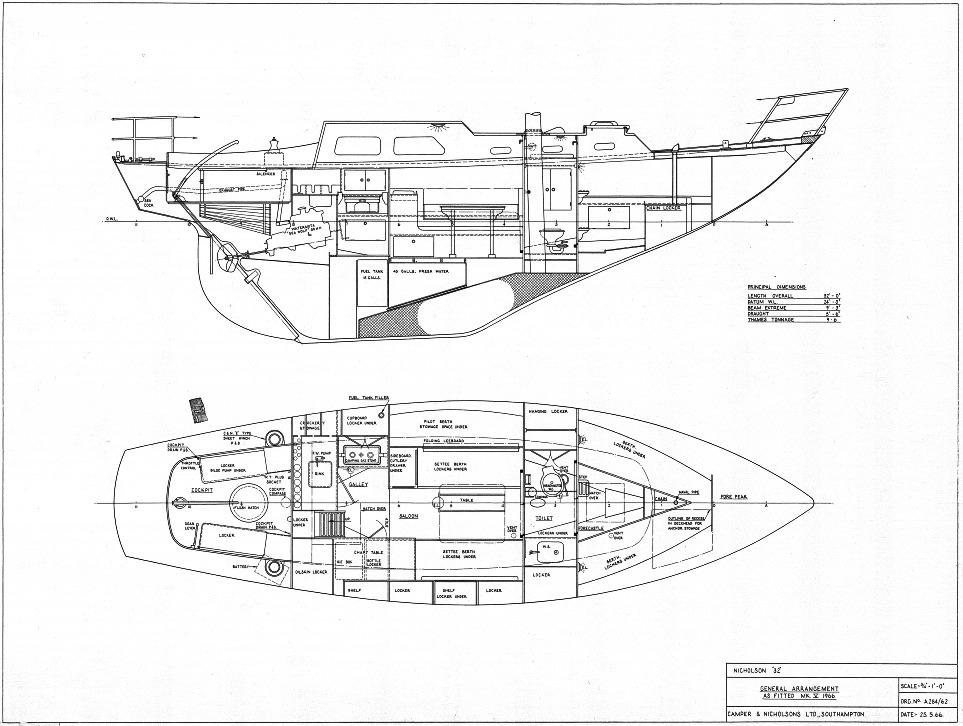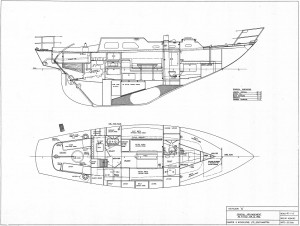The first in the series of Nardi’s Nods began with the fine lines and legendary seakeeping of the Nicholson 32.
The magic of a wooden boat will always stay with us, never to be substituted by the technology, comfort or performance of a modern sailboat. Yet to transform a dream into reality is a privilege for few, even though we are moving through the sea, which costs nothing, and propelled by the wind, which is still exempt from taxation.
But today there are solutions to our dreams that contain a little less magic but are available to all: the boats built at the dawn of glassfibre construction. Little was known in the 1960s about the strength and durability of the new material, so to be on the safe side designers and builders exaggerated, leaving us with indestructible artifacts.
The Camper&Nicholson 32 of 1964 is a perfectly example.There are many for sale around the world for a cost of €15-20,000.
The marketplace ignores boats from back then, primarily because they lack living space, yet it also ignores the high quality of their design and construction. They may have design legacies like a long keel with internal lead ballast, or a skeg with its reassuring support to the rudder. Or a gunwale as an integral part of the hull mould with cap rails in varnished wood, perhaps the optimal hull to deck joint (and it was not unusual to cover the internal joint with further lamination). No air bubbles are found in the hand rolled and compact lamination; the fear of osmosis disappears when confronted with the thickness of the hull.
Aesthetically these yachts maintain the elegant shapes of wooden yachts with some varnished trim, but maintenance costs are low, plus they can also be keep out of the water for long periods of time when not in use.
The sea is at your doorstep: with an investment equal to a family car we can reach any corner of the planet in safety. ★
Translated by James Robinson Taylor





